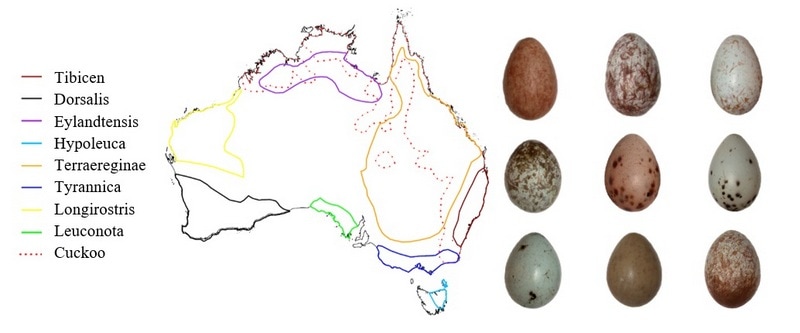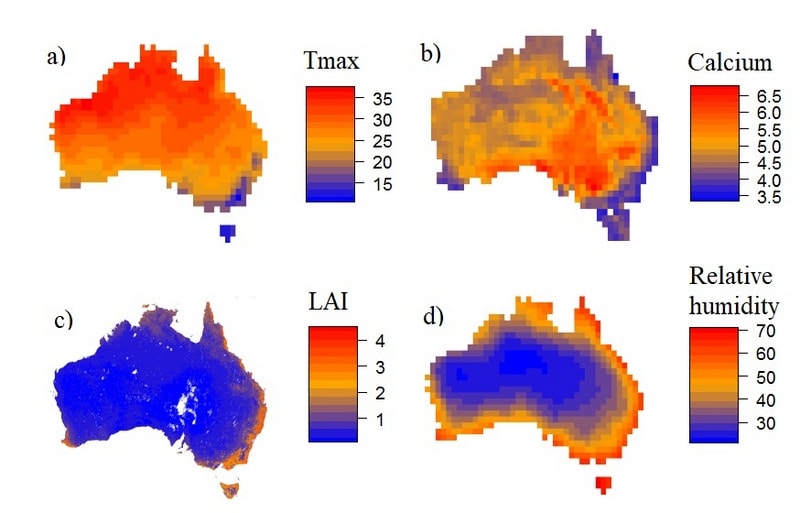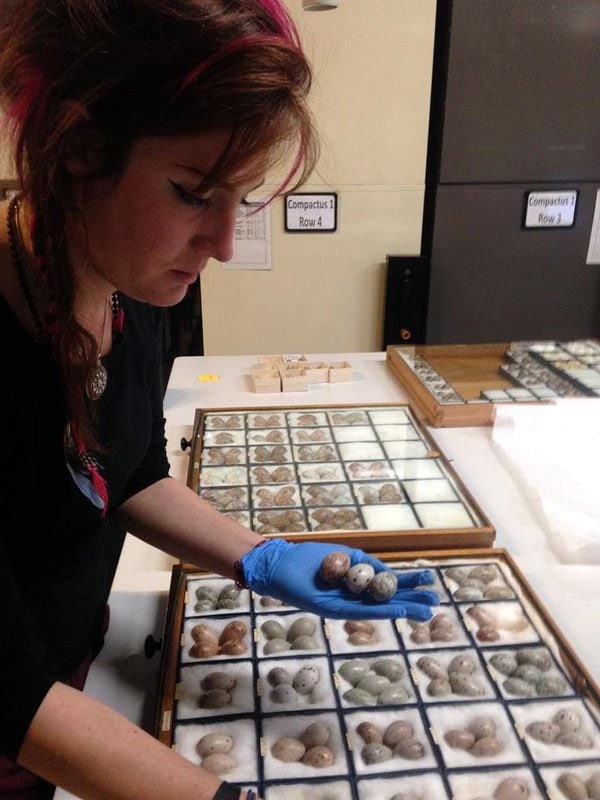Researchers have used TERN-delivered remote sensing data to try to explain the vast range of colours and patterns found on Australian bird eggs. Read on to see if high-tech big data have helped crack this centuries-old case.
Theories on why bird eggs come in a range of colours and patterns have long been debated, and Australian researchers set out to see if they could finally unscramble the mystery.
The research team from Macquarie University used Magpie eggs from across Australia to investigate the influence of things like vegetation cover, temperature, soil calcium and parasite presence on colour and pattern variation.
“Australia’s eight subspecies of magpies (Cracticus tibicen) have a geographical range of around 7 million km2,” says lead researcher Kiara L’Herpiniere. “The habitat throughout this range varies from tropical and temperate rainforest through woodland, grassland and desert, and the Australia-wide satellite data from TERN on leaf area index (LAI) allowed us to characterise the impact vegetation type has on egg coloration.”

“Given that magpies are an arboreal nesting species, nests in areas with a lower leaf area index (open habitats) are more likely to be exposed to sunlight (less shade) and the variation in habitat can, therefore, provide potential protection from harmful solar radiation exposure.”
“Because the TERN LAI data is continental scale and long-term, we were able to investigate these influences over a 16-year period across the entire habitat range,” says Kiara.

The researchers found that while all the factors, including vegetation cover, contributed in some way to the egg appearance, there is still no definitive answer on Australian Magpie egg colouration.
The colourful eggs laid by Australia’s magpies can’t be explained by just one thing and it looks like more TERN supported environmental monitoring will be needed to crack this one.
- Click here for more information on the continental scale remote sensing data delivered by TERN.
- For more information on this research please contact Kiara L'Herpiniere.







